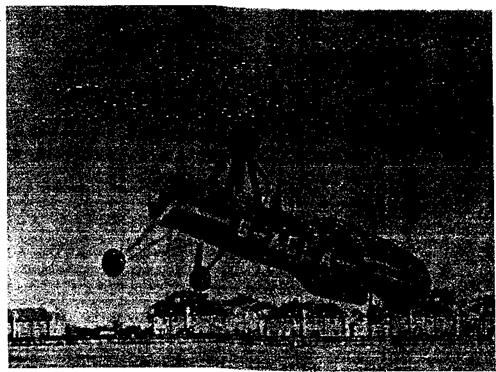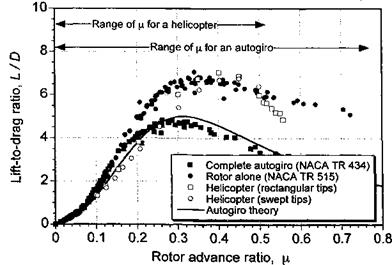It has already been mentioned that, on the first autogiros, the in-plane Coriolis and drag forces on the blades were balanced by interconnected sets of wires between the blades. The blades were also restrained in flap by cables so that they could not “droop” when the rotor was stopped. Cierva found this interim solution rather unsatisfactory because the cables created high parasitic drag, reducing the overall performance of his Autogiros. Eventually, Cierva incorporated support stops instead of suspension cables and friction disks at the drag hinges to damp out any in-plane blade motion. He called these “cantilevered” blades, although the name is a misnomer because the blades were still articulated with mechanical hinges in the conventional sense.
While these ideas seemed to work fine on the lighter weight autogiros, a crop of new problems arose when they were applied to the bigger and heavier machines. These problems included lead-lag forces from Coriolis effects, high vibrations in the control system, large control forces, and a susceptibility to a destructive aeromechanical problem known as ground resonance – see Section 4.10 and Fig. 4.18. There were some limited technical efforts to understand the ground resonance problem on autogiros, but the “trial-and-error” approach meant that it was never satisfactorily resolved until much later when the same problems occurred on helicopters. In the 1930s, NACA made an attempt to study the ground resonance problem by mounting a camera high above the autogiro while the rotor was spun up on the ground. Another camera was mounted on the rotating hub to study the motion of a single blade. The NACA was to have a special interest in the phenomenon. Because of resonance on the mounting hardware, a specially instrumented autogiro that was being tested in the Langley full-scale wind tunnel was completely destroyed; see Gustafson (1971). In later years, helicopters were to suffer similar “resonance” problems, which were cured for the most part by the addition of mechanical dampers to the in-plane blade motion and changes to the undercarriage design. Coleman & Fiengold (1958) developed the first mathematical theory to predict and resolve the problem of ground resonance.
12.5 Helicopters Eclipse Autogiros
One practical limitation (and often the most popularized reason for the loss of interest in the autogiro) is that the autogiro cannot hover stationary in the air. Chamov (2003), however, explains that the reasons compounding its limitations may have been other than technical. While the efficient hovering flight capability of the helicopter is certainly a very desirable attribute, the autogiro still has the ability to take off vertically using the “jump” technique and can land almost vertically, especially into a wind. The autogiro is an efficient machine at low to moderate airspeeds and can outperform both the airplane and the helicopter under these conditions in terms of economics and also safety of flight. Unlike a helicopter, the autogiro has no “deadman’s curve” (see Section 5.6.2) and so can operate much more safely at lower altitudes and airspeeds. However, several early flying mishaps with the autogiro in the hands of inexperienced pilots led initially to a poor perception of the machine. Flight control was drastically improved by the use of “orientable” rotors. While efficient at low speeds, autogiros did not have the higher speed capability of airplanes designed in same time period, mainly because of its high parasitic drag. While much was done on later models of autogiros to increase streamlining and reduce rotor profile drag, especially by eliminating blade bracing wires, they were never to match the higher speed capabilities of airplanes. Furthermore, autogiros were mostly single or dual-seater aircraft, at a time when airplanes in the same weight and engine class could carry several passengers (and for a significantly lower cost). As alluded to earlier, scaling up the machine led to ground resonance and other problems, and these were not completely understood at the time.
While the autogiro was well-engineered, the high cyclic stresses imposed on rotating components meant that mechanical failures of the rotor system were not uncommon. Yet, it would be unfair to overemphasize any mechanical shortcomings of the autogiro at a time when all types of aircraft structural analysis was in its infancy. Autogiro designers worked steadily to improve the mechanical reliability and efficiency of the rotor design and the later designs were extremely robust and reliable. These technical accomplishments were to serve well the future designers of helicopters. By the early 1930s, helicopter pioneers, who for the most part were working independently of those developing the autogiro, suddenly realized that the autogiro had served to help work out all the problems of achieving proper control with helicopters. Thereafter, progress with the helicopter accelerated rapidly and interest in the autogiro dwindled.

 |
 In December 1936, Juan de la Cierva was killed (at the age of only 41 years) in the crash of an airliner. This was a serious blow to the further development of the Autogiro. Shortly thereafter, the British government attempted to centralize rotating-wing research and engineering by trying to get the Cierva and Hafner companies to merge, but this initiative was unsuccessful. Raoul Hafner saw the autogiro only as an interim step toward the development of the helicopter; Juan de la Cierva did not and saw the autogiro я« th« nmfp. rrp. H яппгпягЬ
In December 1936, Juan de la Cierva was killed (at the age of only 41 years) in the crash of an airliner. This was a serious blow to the further development of the Autogiro. Shortly thereafter, the British government attempted to centralize rotating-wing research and engineering by trying to get the Cierva and Hafner companies to merge, but this initiative was unsuccessful. Raoul Hafner saw the autogiro only as an interim step toward the development of the helicopter; Juan de la Cierva did not and saw the autogiro я« th« nmfp. rrp. H яппгпягЬ
to rotor-borne flight. Nevertheless, both Cierva and Hafner saw the important future role of rotating-wing aircraft in both military and civil aviation. At the end of a lecture to the RAeS, Hafner (1938) stated: “We cannot afford to disregard the clear indications towards progress offered by the rotative wing. We can see the limitations with fixed wings – we must be aware of the limitation of fixed ideas; and if are to avoid flying and thinking in circles we must make the wing rotate.”
There were several other factors contributing to the loss of interest in the autogiro in the 1940s – see Chamov (2003). In the United States, military interest in the helicopter increased initially, and in 1938 the Congress passed the Dorsey Bill [see Smith (1985)],
which in part made possible the Rotating-Wing Aircraft Conference at The Franklin Institute in Philadelphia [see Institute of the Aeronautical Sciences (1938)]. This brought together most of the forward-thinking pioneers and technical specialists in the rotating-wing field, such as Hafner, Pitcairn, Kellett, and Sikorsky. Igor Sikorsky was already working toward the first flight of his VS-300 and in his paper [Sikorsky (1939)] at the subsequent Rotating – Wing Aircraft Conference in 1939, he was to extol the future potential of the helicopter. The imminent success of Sikorsky and his VS-300, funding from the Dorsey Bill and the technological advances made possible during wartime, eventually led to the successful development of a military helicopter in the United States.











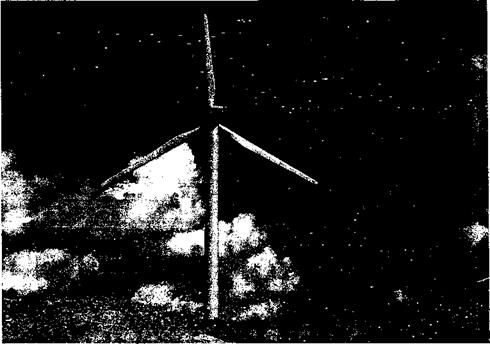
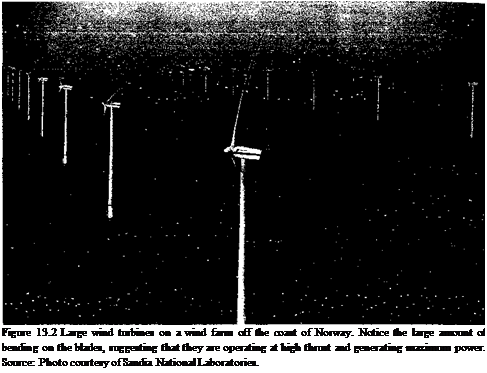
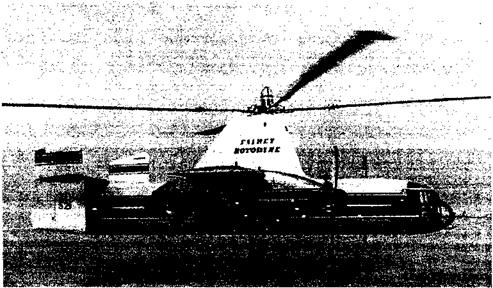
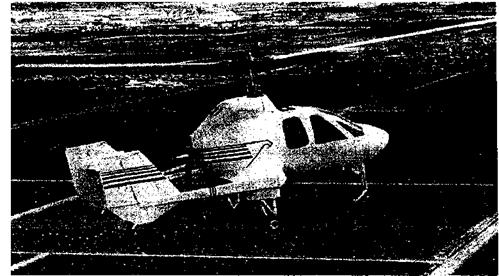
 In December 1936, Juan de la Cierva was killed (at the age of only 41 years) in the crash of an airliner. This was a serious blow to the further development of the Autogiro. Shortly thereafter, the British government attempted to centralize rotating-wing research and engineering by trying to get the Cierva and Hafner companies to merge, but this initiative was unsuccessful. Raoul Hafner saw the autogiro only as an interim step toward the development of the helicopter; Juan de la Cierva did not and saw the autogiro я« th« nmfp. rrp. H яппгпягЬ
In December 1936, Juan de la Cierva was killed (at the age of only 41 years) in the crash of an airliner. This was a serious blow to the further development of the Autogiro. Shortly thereafter, the British government attempted to centralize rotating-wing research and engineering by trying to get the Cierva and Hafner companies to merge, but this initiative was unsuccessful. Raoul Hafner saw the autogiro only as an interim step toward the development of the helicopter; Juan de la Cierva did not and saw the autogiro я« th« nmfp. rrp. H яппгпягЬ

